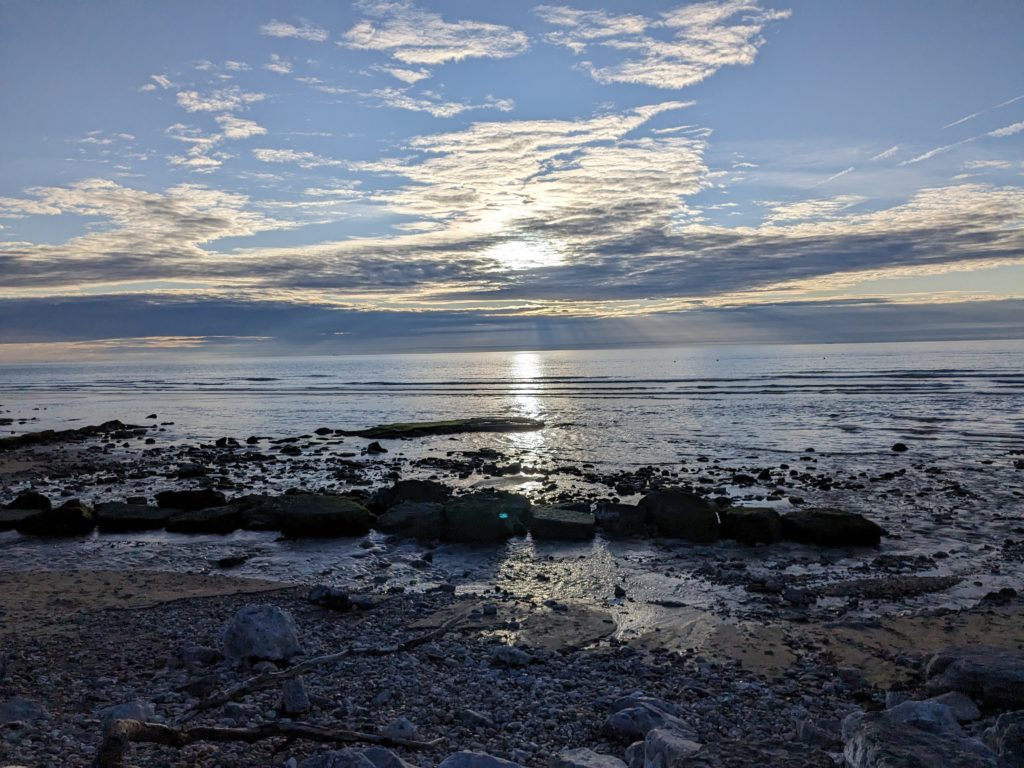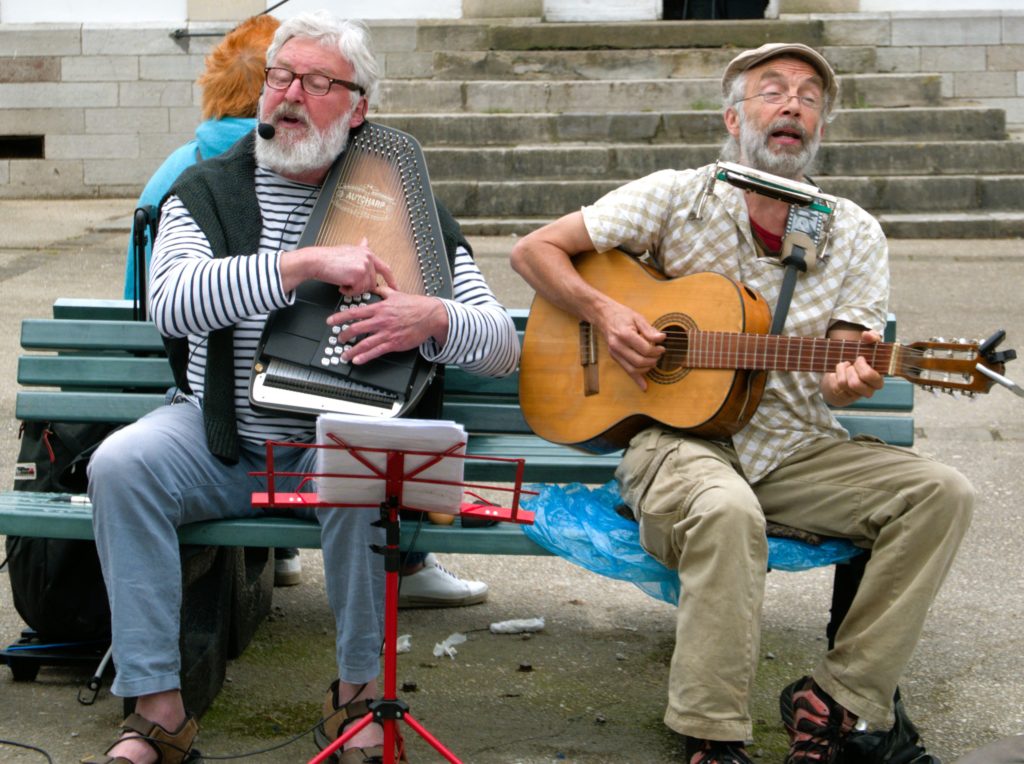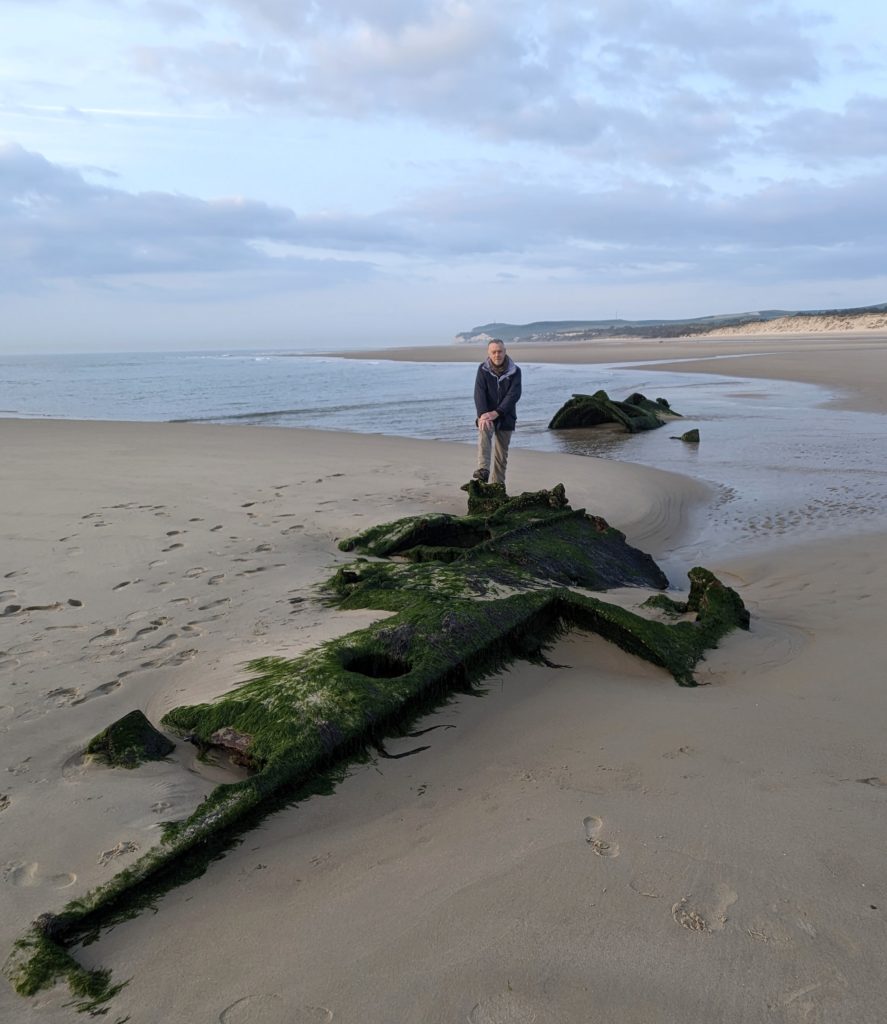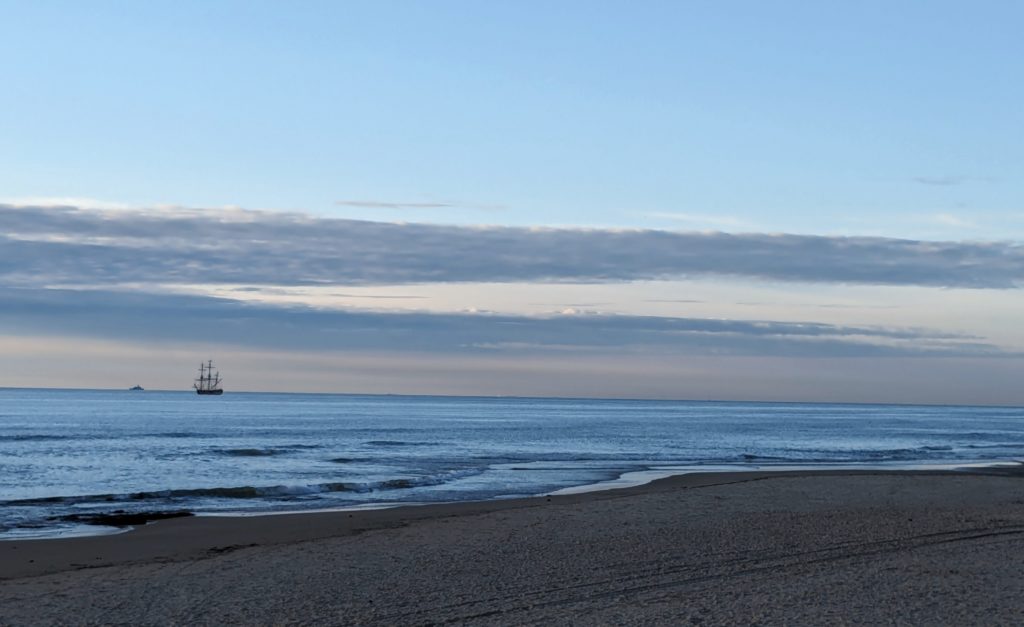Ireland has been the only place that travel journalist JAMES RUDDY has felt comfortable returning to – until he went back recently to France’s Opal Coast. Here’s how it felt. . . .
Images by Sue Mountjoy
 Sunset off Wissant beach
Sunset off Wissant beachIT WAS my Leitrim-born mother who instilled in me the philosophy of never going back to visit places again when she would shake her head and utter that ancient Irish proverb: “Don’t boil your cabbage twice.”
Of course, journalism took me several times to Northern Ireland during The Troubles and back, again and again, to war zones like the Falklands, Sarajevo, Sierra Leone and Sudan.
And Leitrim, and Mayo (my father’s home), have called me back many times for that stirring of the blood which never wears off for any of us when we meet our own people and take a pause to admire the hills where our ancestors once walked.
But travelling back to other places has always held that creeping fear of disappointment at seeing the same sights, eating the same food and finding a place which I once enjoyed ruined by change.
Not so France’s often-overlooked north-west haven, the so-called Opal Coast, a 120km stretch of fine sand beaches, towering cliffs and quaint Belle Epoque towns and resorts, where I returned recently after just a 12-month gap.
Why? Well, maybe it’s the proximity to England – just a 100-minute ferry ride from Dover to Calais and a few kilometres of driving and you can be immersed in the atmosphere of La Belle France, from selecting bargain wines at a hypermarket to enjoying moules mariniere at a seafront brasserie.
Or perhaps it was that feeling last year that the region’s rural Gallic charm had so much affinity with the stoical maritime people of Ireland’s far West, with their wooden Flobart boats, their lively markets, fish and seafood diets and that conservative Catholicism that has their church bells ringing on the hour.
And, of course, there were the regular bouts of spring rain and wind, between days of brilliant beach sunshine which were another reminder that no-one goes to Ireland, or the Opal Coast, for the weather.
 Lively buskers in Wissant Square
Lively buskers in Wissant SquareLAST YEAR, my partner and photographer Sue Mountjoy and I spent our week in a seafront apartment in cosy little Ambleteuse, a rock pool resort where children gawped in wonder on the promenade every evening as wiry fishermen pulled their blue and white Flobarts from the sea before a tractor towed them home with their precious catch of lobster and shellfish on board.
This time we stayed a few kilometres up the coast, in a comfortable apartment in the centre of Wissant, a stone-built former fishing port which sits in viewing distance of the Kent coast and between the lofty capes of Gris Nez and Blanc Nez.
Our base was a modernised gite in an ancient building which once housed the Hotel Duval, from which the famous Wissant School of Painters used to set out on their missions in the late 19th century to produce some classic paintings of local scenes and even the fishermen enjoying end-of-voyage ales alongside their doting children. The painters were drawn there by the beauty of the town and landscapes, its bay and the two capes.
With its huge and sometimes breezy beach, it is also known as the surfing mecca of France, where coloured kites whirl through its blue skies for most of the summer, above the sand yachts which can be hired for an invigorating spin (literally).
 James finds the World War One U-Boat wreck on Wissant beach
James finds the World War One U-Boat wreck on Wissant beachWE ENJOYED the glorious sunsets with evening beach walks, where we saw how the outgoing tide has recently lifted the sand from the black hulk of the German U boat UC-61 which was flooded scuttled on the beach in 1917 by its captain after going aground during a minelaying mission in World War One. He and his crew surrendered to the French.
A further reminder of the area’s wartime past can be seen in the many concrete bunkers and obstacles, erected by the Nazis in World War Two, which are now sinking into the sand after being erected in the 1940s to prevent Allied forces from invading via the inviting beaches.
With the hourly regular bus service (just 2 euros a journey) we travelled to Calais (for its restaurants) and to Boulogne (for the fabulous Nausicaa Sealife Centre, the largest aquarium in Europe), as well as hiring e-bikes to wander round the local roads and green lanes and donning boots to walk the cliffsides between the capes and through the nearby nature reserve.
Further north, in Dunkirk, we joined the fun at one of those regular French traditions, a professional cycle race, where we were entertained with the passionate crowds in the adjoining marquees to free food and drinks and even souvenir baseball caps.
Nearby, the little walled town of Gravelines, said to be one of the most beautiful in France, was a must to waqlk the walls, visit the ancient star-shaped fortress and to join the fun at the lively Fishermens Bar where sailors Pierre and Antoine regaled us with their tales of life on the cross-Channel ferries and tempted us to join them on that strong Belgian ale (luckily I was driving).
 A tall ship stands off Wissant beach
A tall ship stands off Wissant beachBACK IN WISSANT, our days were spent at the lively twice-weekly market, buying the succulent local meat and vegetables, as well as watching the entertainment – including two whiskery singing buskers in the square, who we spotted later in a bar clearly enjoying the fruits of their labour, two glasses of 9 per cent Flemish ale.
Of course, food and drink are always a joy on any French trip and we cooked in as as well as ate out. For the gite dining, the market meat and veg was the heart of a meal we produced from chef James Martin’s French Adventure book, featuring 80 classic recipes including Pork with Vichy carrots. Our attempt looked and tasted as good as his real thing!
Eating out in Wissant leaves you spoiled for choice, with several decent restaurants (not to mention the sensational ice creams at Pepe’s) and among them were the very passable famous Fish Cassoulet and Provencal Chicken at the Charlemagne Brasserie.
All week, we chatted with countless locals (some with that impenetrable French Flemish accent), as well as English-speaking German and Belgian tourists, not to mention a very amusing couple from Cardiff who fell in love with Wissant years ago and claimed they would happily die there.
As a place to return to, it was well worth the risk. Going back is not always wise. But places like Wissant are well worth ‘boiling your cabbage twice!’
 Sherman tank at the Desvres World War Two event
Sherman tank at the Desvres World War Two eventFactfile
For more information on the Pas-de-Calais region of Northern France, visit www.visitpasdecalais.com
For ferries, DFDS offers up to 54 crossings per day on its Dover-Calais and Dover-Dunkirk services, with day trip fares starting at £39 return and short break fares starting at £99 return for a car and up to four people. Duty free is extensive in port shops and on board. And the Premium Lounge is good value with complimentary hot and cold drinks, freshly made sandwiches, and delicious pastries from £18 per person. You can also go fo Priority Boarding to be one of the first to board and disembark the ferry from £10 per car each way.
Festival and event guide
Countless historic events and fun festivals are planned this year in the Opal Coast region.
We joined one of the many moving and spectacular D-Day World War Two 80th anniversary commemorations in the town of Desvres, which involved over 150 tanks and other World War Two vehicles and 500 re-enactors in period military uniforms.
Our base for the visit was the spectacular Chateau de Doudeauville, nestled in the heart of the Opal Coast countryside and with tranquillity and nature as its key attributes. For further details go to: https://www.domainedelacourse.com/
Wissant’s Flobart Festival starts on August 23 this year and features local musicians great local food, markets and the stunning scene of the heavy boats being pulled from the surf by beautiful white Boulonnais heavy horses – a memorable spectacle.

